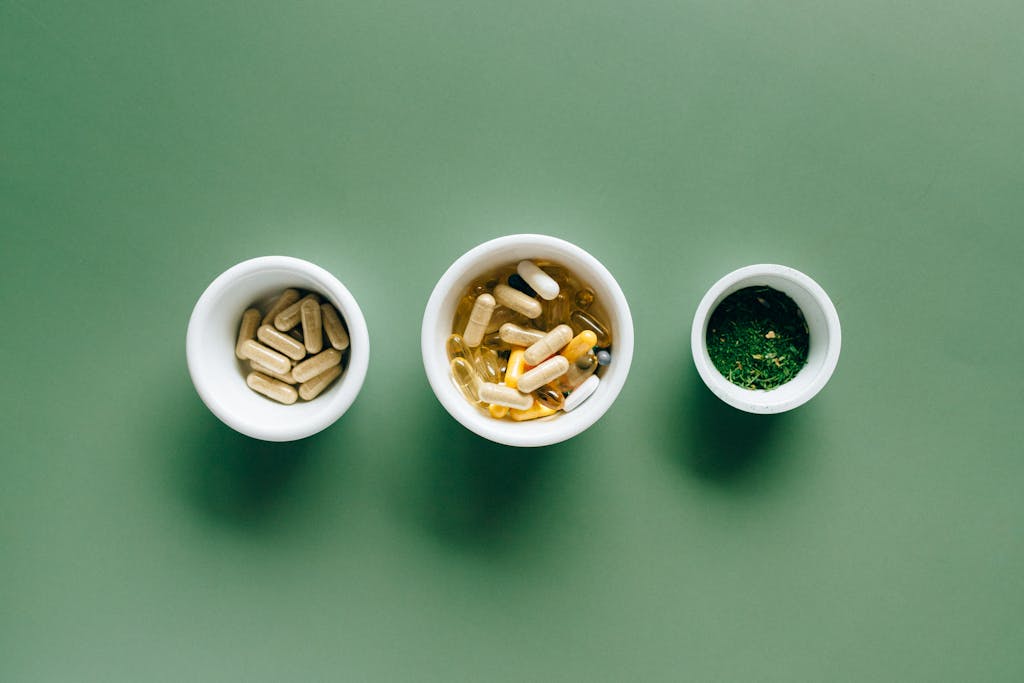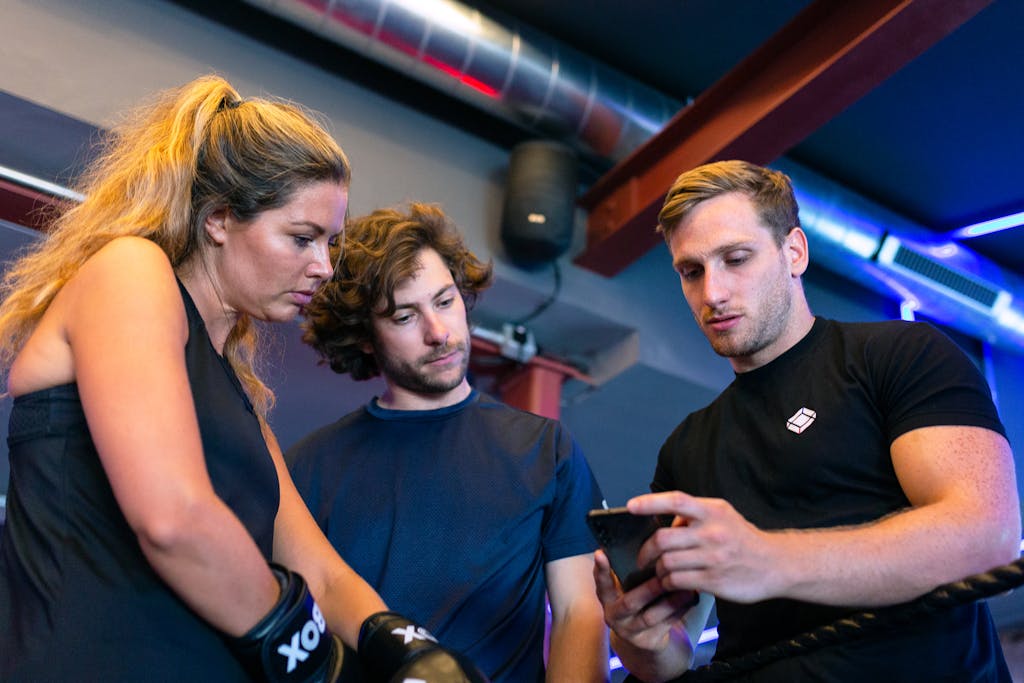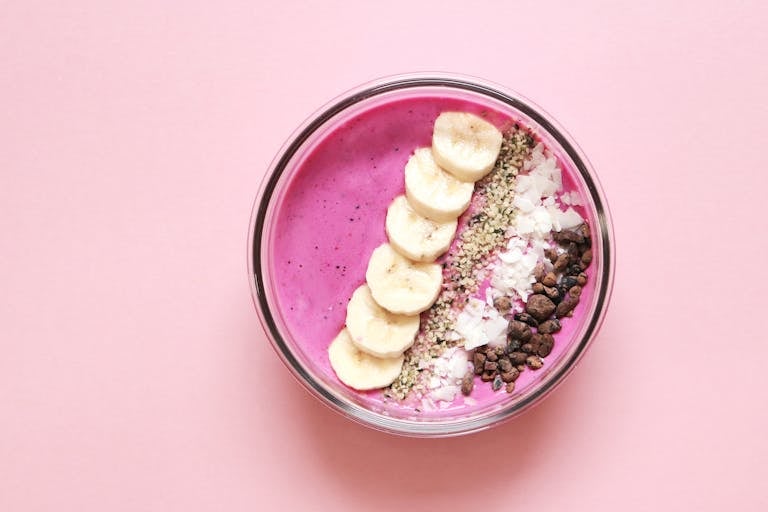Biohacking, also known as DIY biology, is a growing trend aimed at optimizing the human body and mind. It involves making small, incremental changes to your daily routine to enhance your health, well-being, and overall performance. From intermittent fasting to wearable technology, biohacking encompasses a wide range of practices designed to help you take control of your biology.
Introduction to Biohacking
In a world where health and longevity have become primary goals for many, biohacking has emerged as a revolutionary practice. It’s a multidisciplinary approach that integrates biology, technology, and lifestyle modifications to enhance human capabilities
By understanding and manipulating the body’s natural processes, biohackers aim to achieve their peak physical and mental performance. This approach is not limited to elite athletes or tech enthusiasts; it’s accessible to anyone looking to improve their health and well-being.
The growing interest in biohacking reflects a shift in how people view their health—moving from a reactive approach, where one responds to illness, to a proactive approach, where one actively seeks to prevent disease and enhance overall well-being.

Understanding Biohacking
What Is Biohacking?
At its core, biohacking, often called DIY biology, is the practice of using science, technology, and lifestyle changes to optimize your health and performance.
The term “biohacking” can refer to a wide variety of activities, from tracking your sleep and diet with wearable devices to experimenting with nootropics (substances that enhance cognitive function) and even altering your genes using CRISPR technology.
The essence of biohacking lies in the belief that you can improve your body and mind by making informed, deliberate changes.
One of the most appealing aspects of biohacking is its accessibility. You don’t need to be a scientist or have a deep understanding of biology to start biohacking.
Many biohacking techniques are simple, everyday practices that anyone can adopt. For example, switching to a ketogenic diet, which is low in carbohydrates and high in fats, can be considered a form of biohacking.
By changing your diet, you alter the way your body metabolizes energy, which can lead to weight loss, increased energy levels, and improved mental clarity.

How Does Biohacking Work?
Biohacking operates on the principle that small, targeted changes can have significant impacts on your health and performance. By tweaking different aspects of your lifestyle, diet, and environment, you can optimize your body’s functions.
These changes might involve altering your diet to improve gut health, using supplements to boost brain function, or practicing mindfulness techniques to reduce stress.
Here are some key components of how biohacking works:
Intermittent Fasting: This is a popular biohacking technique where you alternate between periods of eating and fasting. Fasting has been shown to improve insulin sensitivity, lower blood sugar levels, and promote fat loss. It can also stimulate autophagy, a cellular process that helps the body clean out damaged cells and regenerate new ones, potentially slowing down the aging process.
Nutritional Supplements: Supplements are a cornerstone of many biohacking practices. Essential fatty acids, vitamin D, and nootropics are commonly used to enhance cognitive function, support bone health, and improve overall physical health.
The idea is to provide your body with the nutrients it needs to function at its best, especially if your diet is lacking in certain areas.

Wearable Devices: Technology plays a significant role in biohacking. Wearable devices like the Apple Watch, Fitbit, and Oura Ring help track various health metrics such as heart rate, sleep quality, and physical activity. This data can be used to make informed decisions about your lifestyle and health practices, allowing for continuous optimization.
Types of Biohacking
Biohacking can be broadly categorized into different types based on the methods and technologies used:
Nutritional Biohacking: This type of biohacking focuses on diet and supplements to improve health outcomes. Examples include following a ketogenic diet to shift your body into a state of ketosis (where it burns fat for fuel instead of carbohydrates) and using intermittent fasting to regulate blood sugar and promote metabolic health.

Technological Biohacking: This involves using devices and technology to monitor and enhance your body’s functions. Wearable devices that track sleep, heart rate, and other vital signs fall into this category. Technological biohackers often use this data to make real-time adjustments to their health practices.

Genetic and Molecular Biohacking: This is the most advanced form of biohacking, involving the manipulation of genes and cellular processes to achieve desired outcomes.
- Techniques such as CRISPR (a gene-editing technology) and red light therapy, which stimulates cellular repair and regeneration, are examples of molecular biohacking. This type of biohacking is still in its early stages but holds great promise for the future.
Key Areas of Biohacking
Biohacking spans several key areas, each targeting different aspects of health and performance. Understanding these areas can help you tailor your biohacking practices to your specific needs and goals.
Physical Health
Physical health biohacking focuses on optimizing bodily functions to achieve peak health and performance. This can involve a range of practices, from diet and exercise to advanced technologies and therapies.

Heart Health: Cardiovascular health is a primary focus for many biohackers. Practices like intermittent fasting, high-intensity interval training (HIIT), and cold exposure (such as ice baths or cryotherapy) can improve heart health by lowering blood pressure, increasing circulation, and reducing the risk of heart disease.
Bone Health: Biohacking for bone health often involves ensuring adequate intake of vitamins and minerals, particularly vitamin D and calcium, which are crucial for bone density. Some biohackers also use whole-body vibration therapy, which has been shown to improve bone strength and reduce the risk of osteoporosis.
Body Composition: Monitoring and optimizing body composition—such as the ratio of muscle to fat—is a common goal in physical health biohacking. Tools like the Apple Watch, combined with dietary interventions and supplements, can help you achieve a leaner, more muscular physique. This not only enhances appearance but also improves metabolic health and physical performance.
Mental Health
Brain biohacking focuses on enhancing cognitive function, stress relief, and improving overall mental well-being. With the increasing awareness of mental health’s importance, this area of biohacking has gained significant attention.
Cognitive Function: Nootropics, also known as smart drugs or cognitive enhancers, are a popular choice for biohackers looking to improve brain function. Substances like caffeine, L-theanine (found in tea), and more advanced compounds like racetams can enhance focus, memory, and mental clarity. Additionally, practices like mindfulness meditation and brain-training games are used to sharpen cognitive abilities.

Stress Management: Chronic stress is a significant contributor to many health issues, including heart disease, depression, and cognitive decline. Biohackers often employ techniques such as mindfulness meditation, deep breathing exercises, and adaptive stress management to reduce cortisol levels and enhance resilience to stress.

Sleep Quality: Sleep is a critical component of mental and physical health, yet it is often overlooked. Biohackers prioritize sleep optimization, using tools like sleep tracking devices and blue light-blocking glasses to improve sleep quality. Strategies such as maintaining a consistent sleep schedule, optimizing sleep environment, and practicing relaxation techniques before bed can lead to better rest and overall well-being.

Cellular Health
Cellular biohacking targets the optimization of cellular functions to prevent chronic diseases, promote longevity, and enhance overall health.
Cellular Energy Metabolism: Mitochondria, the powerhouses of the cell, play a crucial role in energy production. Biohacking practices like intermittent fasting, ketogenic diets, and the use of supplements like CoQ10 and PQQ (pyrroloquinoline quinone) can enhance mitochondrial function, leading to improved energy levels and reduced fatigue.
Cellular Repair: The body’s ability to repair damaged cells is essential for longevity and disease prevention. Advanced biohacking techniques, such as red light therapy and the use of senolytics (compounds that selectively target and eliminate senescent cells), can promote cellular repair and regeneration. This can slow down the aging process and reduce the risk of age-related diseases.
Cellular Senescence: Cellular senescence is the process by which cells lose their ability to divide and function, contributing to aging and the development of chronic diseases. Addressing cellular senescence through biohacking can involve dietary interventions, regular exercise, and the use of supplements like NAD+ precursors, which help maintain cellular function and promote healthy aging.
Benefits of Biohacking
Biohacking offers a wide range of benefits that can significantly enhance your physical health, mental performance, and overall well-being. These benefits can be divided into several categories:
Health Benefits
Improved Health Outcomes: By targeting specific health concerns such as blood pressure, blood sugar, and heart health, biohacking can lead to significant improvements in health outcomes. For instance, adopting a ketogenic diet can help regulate blood sugar levels, reducing the risk of diabetes. Intermittent fasting can improve insulin sensitivity and promote fat loss, leading to better metabolic health.

Enhanced Cognitive Function: Cognitive biohacking strategies, such as using nootropics, practicing mindfulness, and engaging in brain-training activities, can sharpen mental clarity, enhance memory, and improve focus. These benefits are particularly valuable in today’s fast-paced, information-driven world, where mental performance is crucial for success in both personal and professional life.
Optimized Physical Performance: Athletes and fitness enthusiasts can benefit from biohacking techniques that improve athletic performance, body composition, and overall physical health. Techniques such as HIIT, strength training, and the use of recovery-enhancing supplements like creatine and branched-chain amino acids (BCAAs) can lead to better performance, faster recovery, and reduced risk of injury.

Longevity and Healthy Aging: Advanced biohacking techniques, such as genetic engineering and molecular biohacking, hold the promise of slowing down the aging process and promoting healthy aging. By addressing the underlying causes of aging at the cellular level, biohackers aim to extend not just lifespan but also healthspan—the period of life spent in good health.
Getting Started with Biohacking
If you’re new to biohacking, the best approach is to start with simple, manageable changes. These initial steps can have a profound impact on your health and serve as a foundation for more advanced techniques in the future.
Simple Biohacking Techniques
Intermittent Fasting: This is one of the most accessible and effective biohacking strategies. Intermittent fasting involves alternating periods of eating and fasting, which can improve blood sugar levels, enhance insulin sensitivity, and promote weight loss. Starting with a 16:8 fasting schedule—where you fast for 16 hours and eat during an 8-hour window—can be an easy way to begin.

Sleep Optimization: Quality sleep is crucial for overall health. Using wearable devices to track your sleep patterns can provide insights into how well you’re sleeping and help you make adjustments to improve sleep quality. Simple changes like going to bed at the same time every night, creating a relaxing bedtime routine, and minimizing exposure to screens before bed can make a big difference.

Dietary Supplements: Supplements can play a significant role in filling nutritional gaps and enhancing your health. Starting with basic supplements like vitamin D (important for bone health and immune function), omega-3 fatty acids (which support heart and brain health), and a high-quality multivitamin can provide a strong foundation for more targeted supplementation later on.
Daily Routine Modifications: Small lifestyle modifications can have a significant impact on your health and well-being. For example, incorporating regular physical activity, practicing mindfulness or meditation, and managing stress through techniques like deep breathing or journaling can all contribute to better health.
Tools and Resources
Biohacking involves continuous self-experimentation and tracking. Here are some tools and resources to help you get started:
Wearable Technology: Devices like the Apple Watch, Fitbit, and Oura Ring are essential tools for monitoring your health. They can track metrics such as heart rate, sleep quality, and physical activity, providing valuable data that you can use to make informed decisions about your health practices.
Biohacking Supplements: Start with basic biohacking supplements such as omega-3 fatty acids, vitamin D, and brain-derived neurotrophic factor (BDNF) to support physical and mental health. As you progress, you can explore more advanced supplements tailored to your specific needs.

Biohacking Communities: Joining online biohacking communities can provide valuable insights, support, and motivation. Platforms like Reddit, Facebook groups, and specialized biohacking forums are great places to connect with others who share your interests and learn from their experiences.
DIY Biohacking
For those who enjoy a more hands-on approach, DIY biohacking allows you to experiment with various techniques and monitor the outcomes. This approach requires a willingness to track your progress meticulously and make adjustments based on the data you collect.
Blood Testing: Regular blood tests can provide a wealth of information about how your body is responding to different biohacking interventions. For example, testing your blood glucose levels, cholesterol, and vitamin D levels can help you fine-tune your diet and supplement regimen.
Self-Experimentation: Biohacking is all about experimentation. By trying different techniques—such as varying fasting periods, adjusting macronutrient ratios, or incorporating new supplements—you can discover what works best for your body. Keeping a detailed journal of your experiments and outcomes is essential for tracking progress and making informed decisions.
Fasting and Nutrition: Experimenting with different fasting periods, such as alternate-day fasting or extended fasts, can help optimize your energy metabolism and cellular repair processes. Combining fasting with specific dietary interventions, such as a ketogenic diet, can further enhance the benefits.

Advanced Biohacking Techniques
As you become more comfortable with the basics, you may want to explore advanced biohacking techniques that offer even more powerful results. These methods often involve more complex interventions and require a deeper understanding of biology and technology.
Molecular and Genetic Biohacking
For those looking to take biohacking to the next level, molecular and genetic biohacking offer powerful tools for optimizing health at a cellular level.
Molecular Biohacking: Techniques like red light therapy, which uses specific wavelengths of light to stimulate cellular repair and energy production, target the body at the molecular level. This can lead to improvements in skin health, reduced inflammation, and enhanced muscle recovery.
Genetic Biohacking: Genetic engineering, using technologies like CRISPR, allows for the manipulation of genes to achieve desired outcomes. While this is still an emerging field, it holds great promise for the future of biohacking. Genetic biohacking could potentially lead to significant advances in disease prevention, longevity, and overall health.
Biohacking Safety
As you delve deeper into biohacking, it’s crucial to ensure that your practices are safe and effective. Biohacking, especially at the advanced levels, can involve significant risks if not approached with caution.
Safe Practices
Research Thoroughly: Before trying any new biohacking technique, it’s essential to conduct thorough research. Understand the science behind the method, read studies, and consider potential risks. Not all biohacking techniques are well-studied, so it’s important to rely on credible sources and scientific evidence.
Consult Healthcare Professionals: For more advanced techniques, especially those involving supplements, hormones, or genetic modifications, it’s advisable to consult with a healthcare professional. They can help you assess the risks and benefits, ensure you’re not interfering with any existing conditions, and guide you in safe practices.
Start Slow: When trying a new biohacking technique, start with small, manageable changes. This allows you to monitor your body’s response and minimize potential side effects. Gradually increase the intensity or complexity of the practice as you become more comfortable and knowledgeable.

Monitoring Health Concerns
Regularly monitoring your health outcomes is key to ensuring that your biohacking practices are leading to optimal results.
Track Your Metrics: Use wearable devices and regular blood tests to track important health metrics like blood pressure, blood sugar, sleep quality, and physical performance. This data will help you assess the effectiveness of your biohacking practices and make necessary adjustments.
Prevent Chronic Diseases: Use biohacking as a preventive measure by addressing risk factors for chronic diseases early on. For example, if you’re at risk for diabetes, adopting a low-carb diet and regular exercise routine can help prevent the disease from developing.
Listen to Your Body: Pay attention to how your body responds to different biohacking practices. If you experience negative side effects, it’s important to reassess your approach and make necessary changes. Biohacking is not a one-size-fits-all solution, and what works for one person may not work for another.
Final Thoughts on Advanced Biohacking
Biohacking is a continuous journey of self-exploration and improvement. Whether you’re just starting with basic lifestyle changes or exploring advanced molecular techniques, biohacking offers a path to better health and longevity. By understanding how your body responds to various interventions and making informed decisions, you can unlock your full potential and live a healthier, more fulfilling life.







